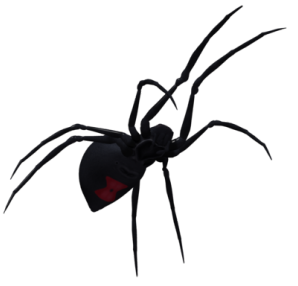Lasiodora parahybana (Brazilian salmon pink bird-eating)
Country of Origin: Brazil
Natural Environment and Behavior:
Lasiodora parahybana, commonly known as the Brazilian salmon pink bird-eating tarantula or LP, is a remarkable species found in the northeastern region of Brazil. It holds the distinction of being the fourth largest tarantula in the world, following the three species in the Theraphosa genus.
First discovered and described by Cândido Firmino de Mello-Leitão in 1917, Lasiodora parahybana is endemic to Paraíba, Brazil, making it an important part of the region’s biodiversity. In the tarantula enthusiast community, they are highly sought after as pets due to their impressive size and ease of breeding. Moreover, LP tarantulas are known for their docile nature, making them suitable for enthusiasts of all levels.
Females of the species tend to have a robust physique, with a large body in comparison to their legs. In contrast, males exhibit a more slender body size. Notably, mature males possess tibial hooks on their front pair of legs, which play a crucial role during mating. These hooks aid in restraining the female’s fangs during the mating process.
One of the reasons for their popularity as pets is their aesthetically pleasing appearance. They possess a uniform black coloration, and upon reaching maturity, they develop vibrant pink-red hairs along their legs, chelicerae, and abdomen. This coloration is especially pronounced in males.
Endemic to the Atlantic forest region of Brazil, specifically near Campina Grande, L. parahybana is well-adapted to its natural habitat. When threatened, these tarantulas raise their legs and the front of their bodies as a defensive display to deter potential predators. In more severe situations, they may resort to biting. While their bites can be mechanically dangerous, the venom is weak and generally not medically significant to humans. Instead of biting, they often employ a defensive mechanism by flicking urticating hairs from their abdomen. These barbed hairs irritate the skin, serving as an effective deterrent against predators.
In their natural habitat, Brazilian salmon pink tarantulas reside on the forest floor, seeking shelter in leaf litter, logs, burrows, or even out in the open. They are ambush predators, patiently waiting for prey to come within striking distance. Their feeding habits primarily consist of large insects, occasionally supplemented with amphibians and small reptiles. Despite the name “bird-eating,” there is limited evidence to support the notion that they actively prey on birds.
Like many invertebrates, salmon pink tarantulas undergo regular moulting or ecdysis, shedding their old exoskeletons as they grow. During this vulnerable period, they lie on their backs and carefully emerge from their old skin. It is worth noting that they cease eating a few days before moulting, making them more susceptible to predation.
Lasiodora parahybana captivates with its impressive size, captivating appearance, and intriguing behaviors. Through proper care and conservation efforts, we can continue to appreciate and learn from these magnificent creatures that contribute to the intricate tapestry of Brazil’s natural ecosystems.
Longevity:
Females: 15 years, males: 5 years.
Size:
Up to 28cm.
Husbandry:
Keep at 70-80% humidity and 24-27°C, use a mix of coconut fiber and peat moss.
Enclosure Size:
5-10 cm for spiderlings, 20*20*20 cm for juveniles, and 60*45*30 cm or more for adults.
